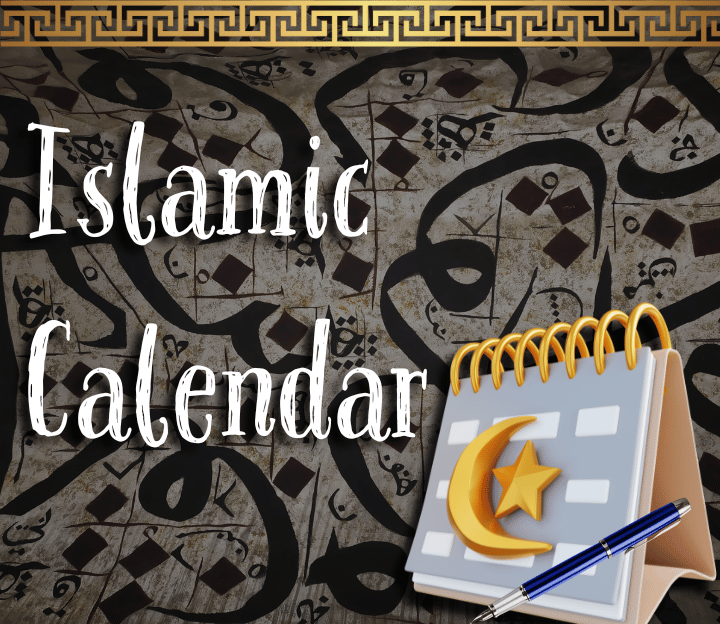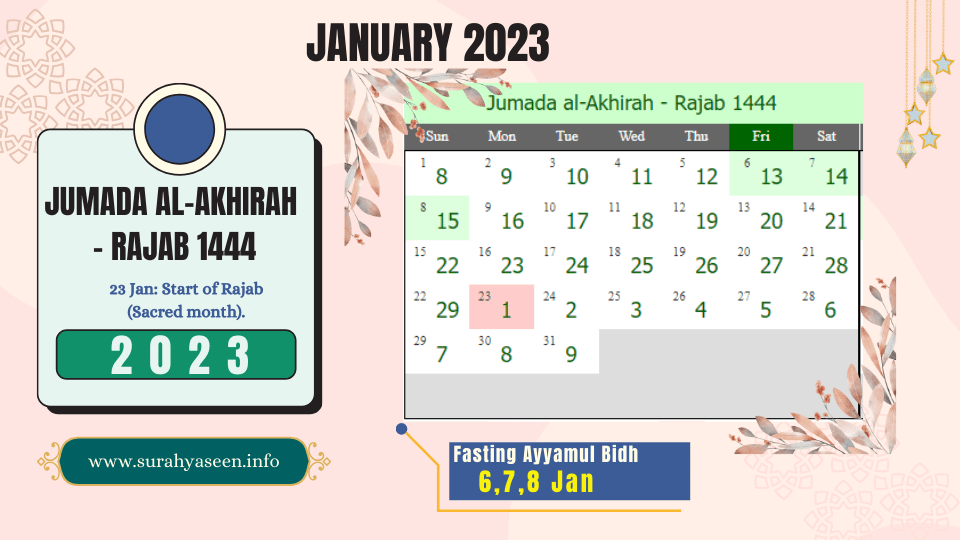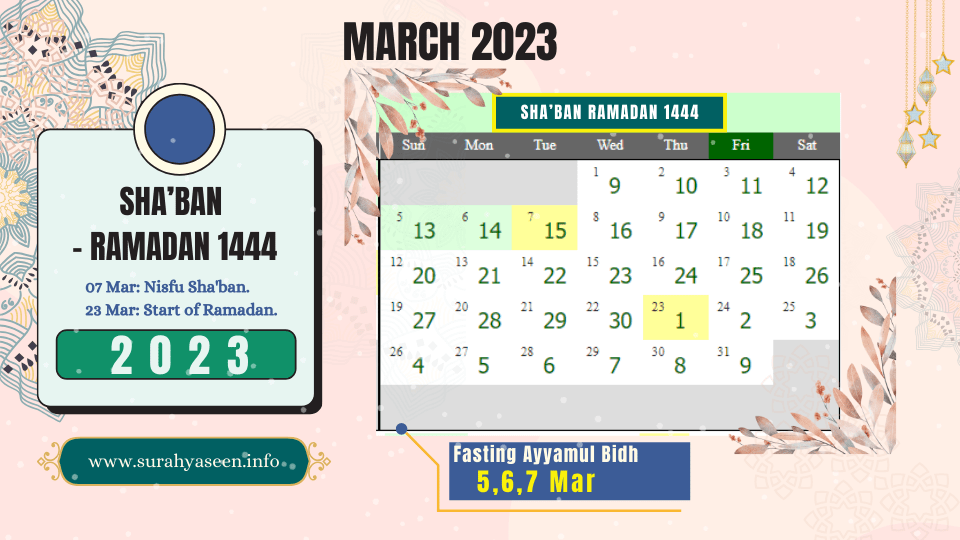The Islamic calendar, known as the Hijri or Lunar calendar, differs from the Gregorian calendar we commonly use. It’s based on the moon’s cycles and is about 11 days shorter. It has 12 months, with either 29 or 30 days, depending on the moon’s sighting.
Islamic months start with the appearance of the new moon, and the first month is called Muharram.
Islamic Month Today

Islamic Calendar Months
- Muharram (مُحَرَّم): This is the Islamic New Year and the first month of their calendar. It’s a time of reflection and remembrance, particularly for Shia Muslims who recall the martyrdom of Imam Hussein, the grandson of Prophet Muhammad.
- Safar (صَفَر)
- Rabi’ al-Awwal (رَبِيع ٱلْأَوَّل): In this month, Muslims celebrate the birth of the Prophet Muhammad (Mawlid al-Nabi), though the specific date can vary.
- Rabi’ al-Thani (رَبِيع ٱلثَّانِي) or Rabi’ al-Akhir
- Jumada al-Awwal (جُمَادَىٰ ٱلْأُولَى)
- Jumada al-Thani (جُمَادَىٰ ٱلثَّانِيَة)
- Rajab (رَجَب): This month is considered sacred, and a significant event is “Lailat al-Miraj,” which marks the night when it’s believed that the Prophet Muhammad ascended to the heavens.
- Sha’ban (شَعْبان)
- Ramadan (رَمَضَان): Ramadan is the holy month of fasting. Muslims fast from dawn till sunset, engaging in increased devotion, reflection, and community activities.
- Shawwal (شَوَّال): This month follows Ramadan, and it ends with the celebration of Eid al-Fitr. Eid al-Fitr marks the end of Ramadan and is celebrated with prayers, feasting, and charity.
- Dhul-Qi’dah (ذُو ٱلْقِعْدَة)
- Dhul-Hijjah (ذُو ٱلْحِجَّة): This is the last month of the Islamic calendar and is significant because it’s when the Hajj pilgrimage to Mecca takes place. The month concludes with Eid al-Adha, also known as the “Festival of Sacrifice.”
Islamic Calendar 2023 with Ayyam Al Bidh Dates




Read More: Don’t forget to share the Aesthetic Ramadan Wishes & Greetings with your Friends and Family
Hijri Origin and Meaning
The Hijri calendar gets its name from the Arabic word “Hijra” (الهجرة), which means “emigration.” The calendar starts from the year of the Hijra, which is the migration of the Prophet Muhammad and his followers from Mecca to Medina in 622 CE. This event marks the beginning of the Islamic era and is considered one of the most significant events in Islamic history.
Who created the Hijri Calendar?
The Hijri calendar was not created by a single individual; rather, it developed over time based on lunar observations and the need for a calendar to organize the Islamic religious and social life. The calendar’s development began during the time of the Prophet Muhammad, who provided guidance on lunar months.
However, it wasn’t formally standardized during his lifetime. It was later refined and formalized by Islamic scholars and authorities.
Meanings of Islamic Month Names
The names of the Hijri months are derived from Arabic words, and some have historical or cultural significance. Here are the meanings of the names of the Hijri months:
- Muharram (مُحَرَّم): The word “Muharram” means “forbidden” or “sacred.” It is considered a sacred month, and fighting and warfare were traditionally forbidden during this time.
- Safar (صَفَر): The word “Safar” does not have a specific meaning associated with the month.
- Rabi’ al-Awwal (رَبِيع ٱلْأَوَّل): “Rabi'” means “spring,” and “al-Awwal” means “the first.” This month is associated with the arrival of spring and new beginnings.
- Rabi’ al-Thani (رَبِيع ٱلثَّانِي) or Rabi’ al-Akhir: “Rabi’ al-Thani” means “the second spring.” It is another reference to the spring season.
- Jumada al-Awwal (جُمَادَىٰ ٱلْأُولَى) and Jumada al-Thani (جُمَادَىٰ ٱلثَّانِيَة): The word “Jumada” does not have a specific meaning associated with the months.
- Rajab (رَجَب): The word “Rajab” means “to respect” or “to honor.” It is considered one of the sacred months in Islam.
- Sha’ban (شَعْبان): The word “Sha’ban” does not have a specific meaning associated with the month.
- Ramadan (رَمَضَان): The word “Ramadan” may be derived from the Arabic word “ramida,” which means “intense heat.” This is likely a reference to the high temperatures often experienced during this month in some regions.
- Shawwal (شَوَّال): The word “Shawwal” does not have a specific meaning associated with the month.
- Dhul-Qi’dah (ذُو ٱلْقِعْدَة) and Dhul-Hijjah (ذُو ٱلْحِجَّة): The word “Dhul” means “possessor of” or “belonging to,” and “Qi’dah” and “Hijjah” are associated with the concept of “sitting” or “rest,” possibly indicating the time for pilgrimages and religious observances.
These meanings provide some cultural and historical context for the names of the months in the Hijri calendar, but the primary significance is their use in determining Islamic religious events and observances.
1 thought on “Islamic Calendar: Muslim Holidays You Didn’t Know About!”